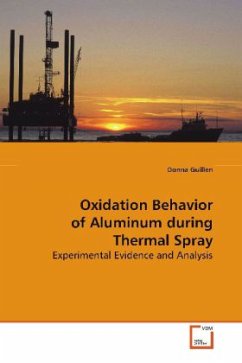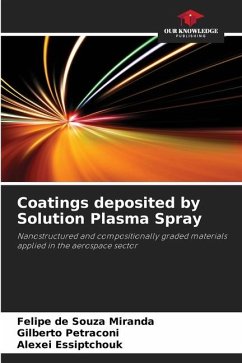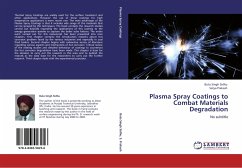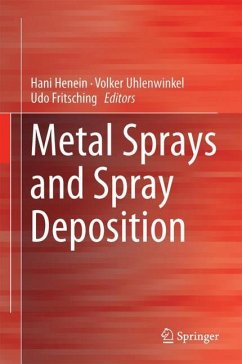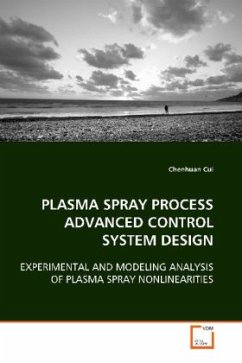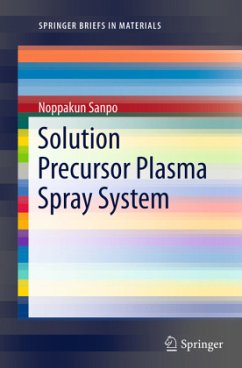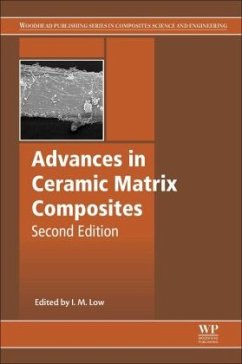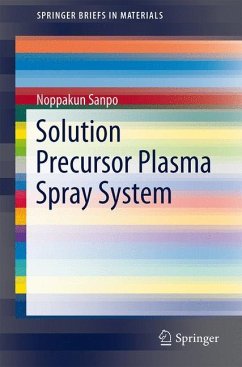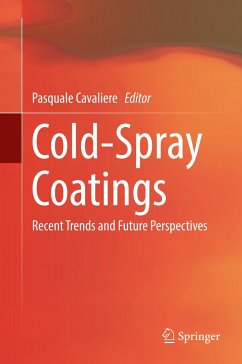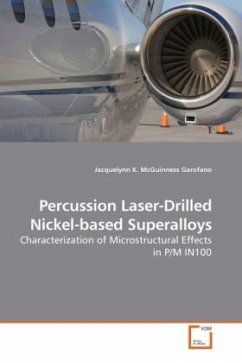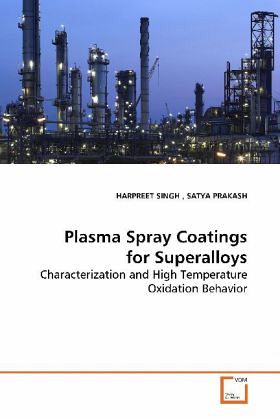
Plasma Spray Coatings for Superalloys
Characterization and High Temperature Oxidation Behavior
Versandkostenfrei!
Versandfertig in 6-10 Tagen
52,99 €
inkl. MwSt.

PAYBACK Punkte
26 °P sammeln!
Superalloys are well known materials forhigh temperature applications. Although thesuperalloys have adequate mechanical strength atelevated temperatures, yet they often lack resistanceto oxidizing/corroding environments during long timeexposures. One possible way to combat the problemconstitutes the use of protective coatings on thesuperalloys. Among the various techniques used fordeposition of coatings, plasma spraying is aversatile technology that has been successful as areliable cost-effective solution for many industrialproblems.In the present book, high temperatureoxidation behavior of so...
Superalloys are well known materials for
high temperature applications. Although the
superalloys have adequate mechanical strength at
elevated temperatures, yet they often lack resistance
to oxidizing/corroding environments during long time
exposures. One possible way to combat the problem
constitutes the use of protective coatings on the
superalloys. Among the various techniques used for
deposition of coatings, plasma spraying is a
versatile technology that has been successful as a
reliable cost-effective solution for many industrial
problems.In the present book, high temperature
oxidation behavior of some Ni- and Fe- based
superalloys has been explained with and without the
application of plasma sprayed coatings in air, as
well as, in a simulated boiler (Na2SO4-60%V2O5)
environment.Characterization and high temperature
oxidation behavior of four coatings; Ni-22Cr-10Al-1Y
(NiCrAlY), Ni-20Cr, Ni3Al and Stellite-6 has been
elaborated with the help of Optical microscopy,
Scanning Electron Microscopy/Energy Dispersive
Spectroscopy and Electron Probe Micro Analysis.The
effectiveness of the coatings has been discussed on
the basis of weight change data.
high temperature applications. Although the
superalloys have adequate mechanical strength at
elevated temperatures, yet they often lack resistance
to oxidizing/corroding environments during long time
exposures. One possible way to combat the problem
constitutes the use of protective coatings on the
superalloys. Among the various techniques used for
deposition of coatings, plasma spraying is a
versatile technology that has been successful as a
reliable cost-effective solution for many industrial
problems.In the present book, high temperature
oxidation behavior of some Ni- and Fe- based
superalloys has been explained with and without the
application of plasma sprayed coatings in air, as
well as, in a simulated boiler (Na2SO4-60%V2O5)
environment.Characterization and high temperature
oxidation behavior of four coatings; Ni-22Cr-10Al-1Y
(NiCrAlY), Ni-20Cr, Ni3Al and Stellite-6 has been
elaborated with the help of Optical microscopy,
Scanning Electron Microscopy/Energy Dispersive
Spectroscopy and Electron Probe Micro Analysis.The
effectiveness of the coatings has been discussed on
the basis of weight change data.



